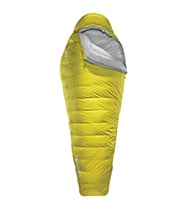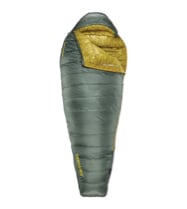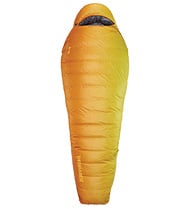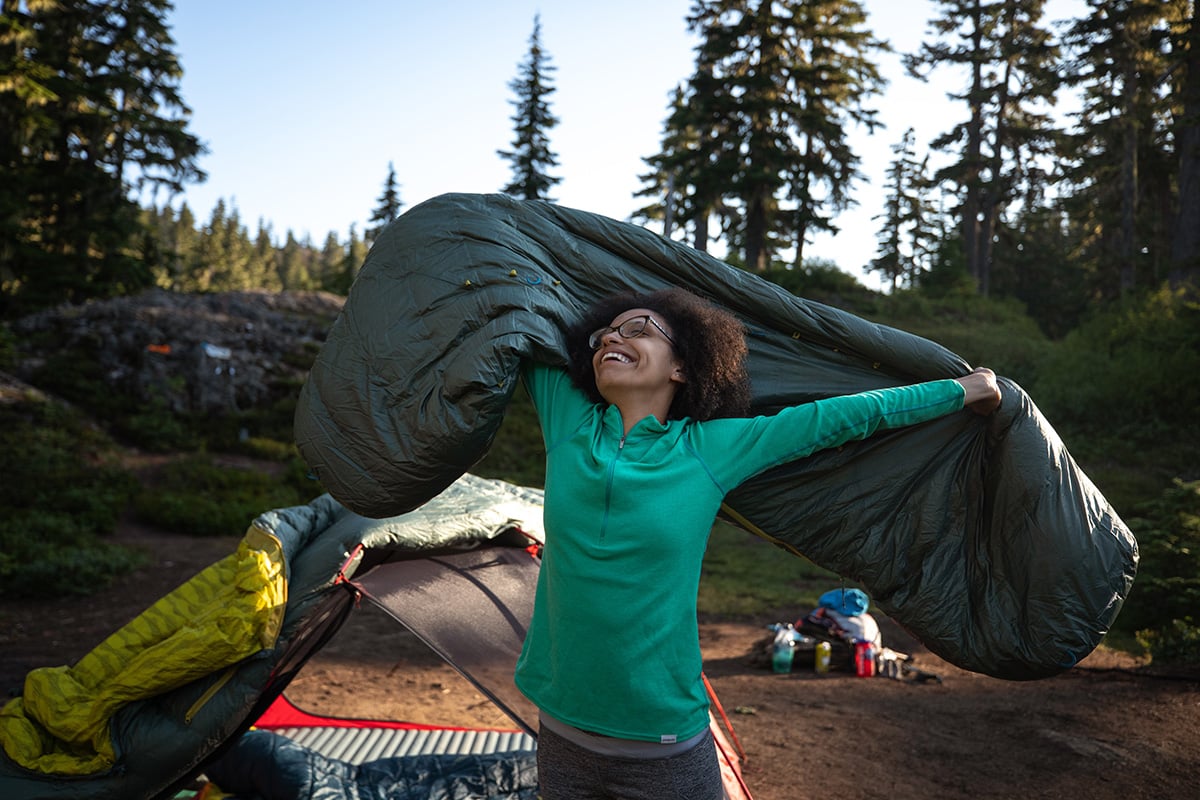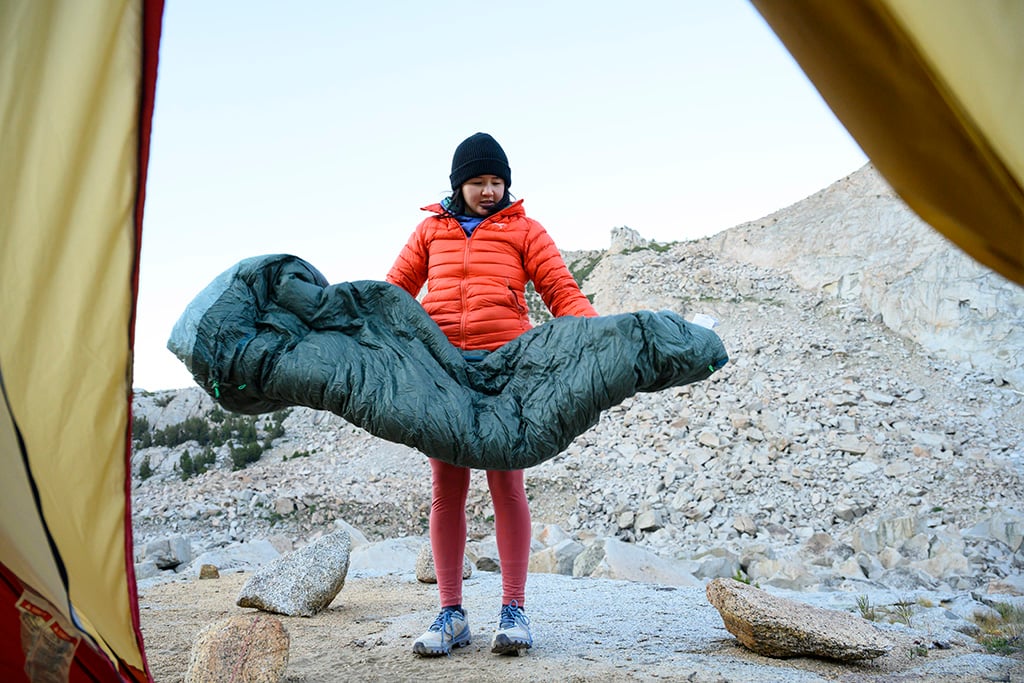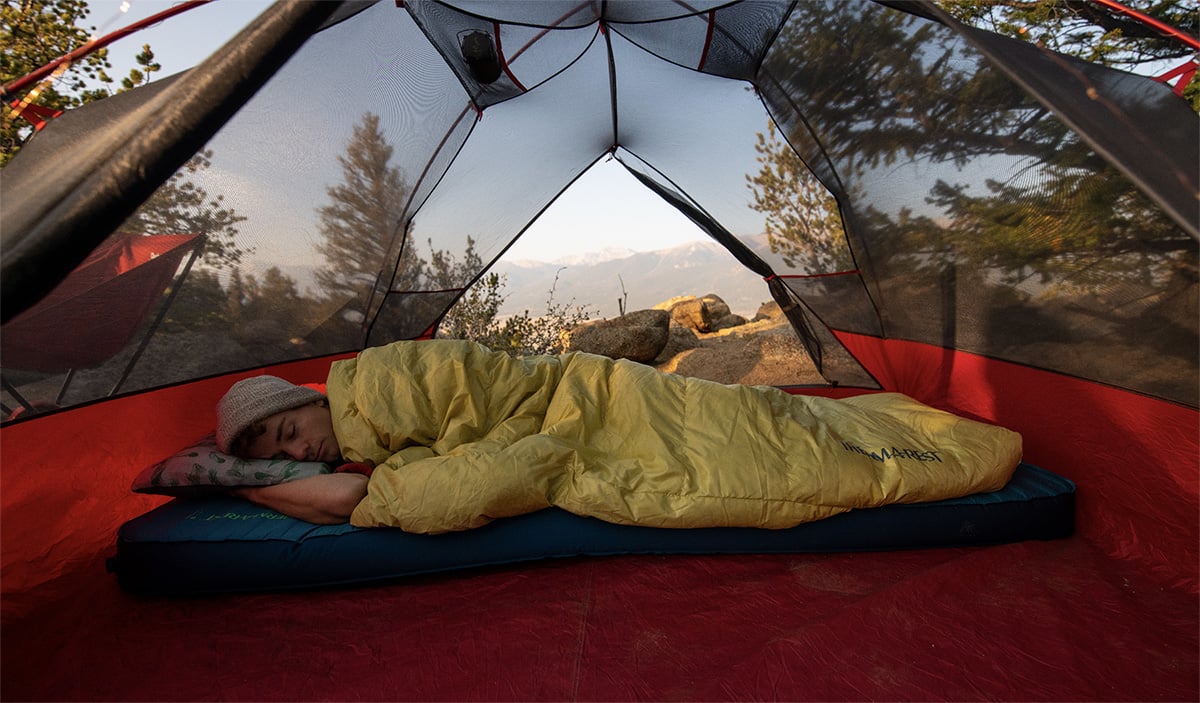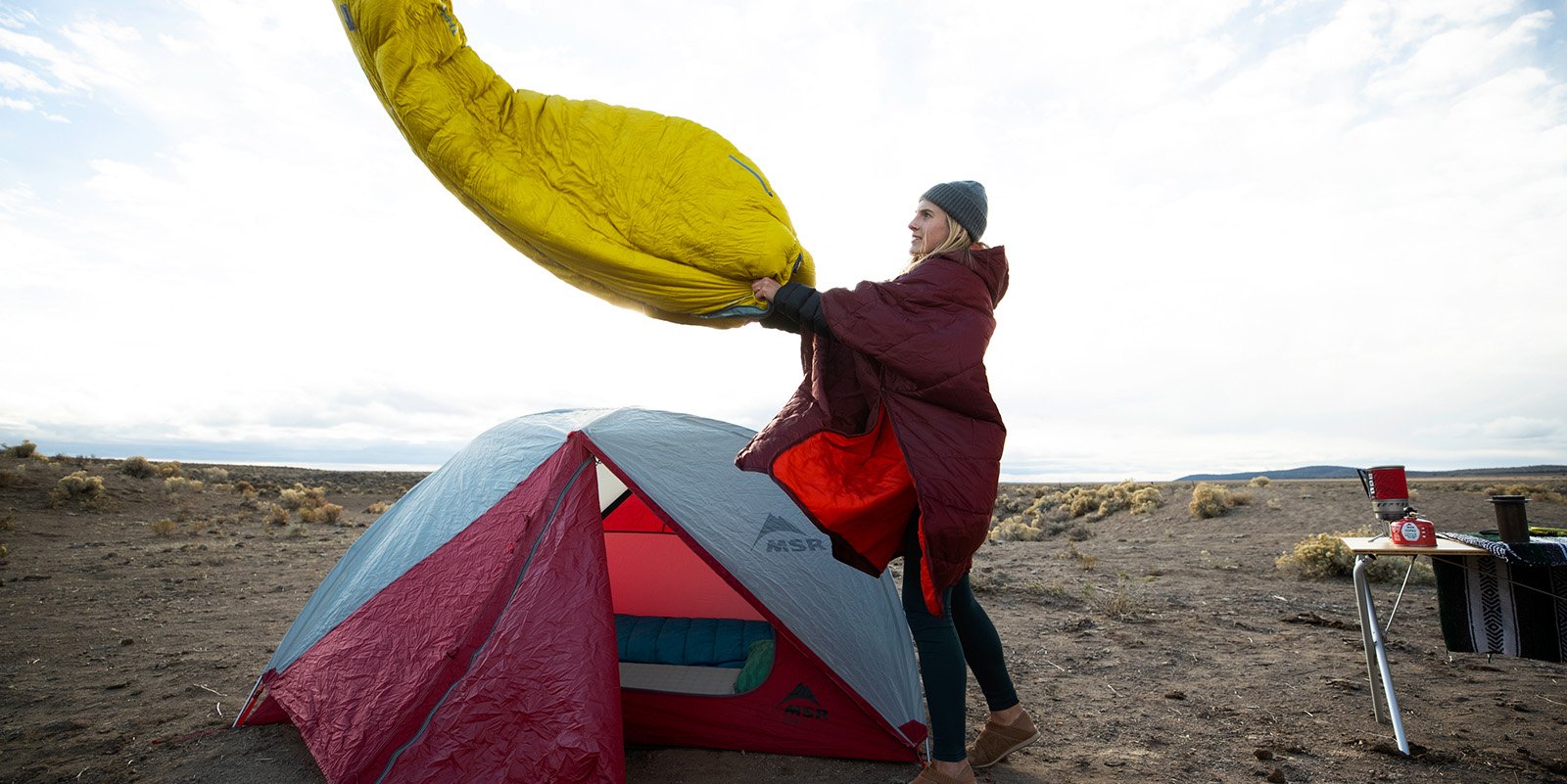Ever hear the saying less is more? It applies to a lot of things, but sleeping bags? Surely, if you want a warmer bag, then add more down. If you’re looking for a lighter bag, use less down. However, what if we told you that you could use less down to achieve the same temperature rating? Or, what if, you could use the same amount of down for an even warmer bag? Ounce-counters and dirtbags rejoice!
“But, how does it work?”, you might ask. After all, a warmer bag for less weight seems like an oxymoron to some adventurers. It all comes down to intentionality. Not the same mindset that you discuss with your yoga teacher, but similar. Our zoned insulation is, more or less, being selective and intentional of where and how much fill we place in our sleeping bags.

The truth about your backside
Sleeping bags just scream warmth. The minute you locked eyes on that cocoon of 360-degree warmth, your mind immediately started planning for future adventures with nights surrounded by your warm bag.
However, your bag doesn’t provide the same amount of warmth that your eyes see. The nature of the fill in your sleeping bag, whether it be synthetic or down, is that it manages the flow of temperature. The three-dimensional structure forms loft which traps air, keeping cold air out and keeping your body at a comfortable temperature.
The problem starts the minute that you lay down. When you lay down on your sleeping bag, you compress every cubic inch of fill on your backside. The minute that this fill becomes compressed, it begins losing its ability to retain heat. The down on the bottom loses its thermal efficiency.
Luckily, you have a properly insulated pad with an appropriate R-value. The compressed fill will offer some warmth, but the majority of your warmth will be coming from your pad.

What is Zoned Insulation?
Many sleeping bag manufacturers will take down insulation and spread it somewhat evenly through the bag. Now, with a bag that utilizes zoned insulation, we would place the majority of the fill on the top of the bag and less on the bottom where your insulated pad is providing warmth. The result is a warmer bag for the same weight.

By the same token, if you’re targeting a certain temperature rating while building a bag, you could use less fill and save weight by using zoned insulation. Each sleeping bag’s insulation ratio is also determined by the target temperature rating. Our warmer weather sleeping bags use a lower ratio, whereas our colder bags use a higher ratio. For example, our Space Cowboy 45F/7C bags uses a 65/35 ratio whereas our Oberon 0F/-18C bags use a 60/40 distribution.

Better Sleep Benefits
The benefits of a better night at camp and a lighter pack on the trail are endless. A smaller pack to tackle the miles ahead with comfort and ease. Maybe it means more room for food and supplies, allowing your adventure to trace deeper into the backcountry. A warmer night at camp allowing you sleep soundly and wake up feeling rested and ready for the day ahead.

In fact, we have so much confidence in our design philosophies and technologies like zoned insulation that we place the Sleep Better Guarantee on every sleeping bag.
Visit our sleeping bags page to learn more about our sleeping bags and start resting better.
Related Posts:

